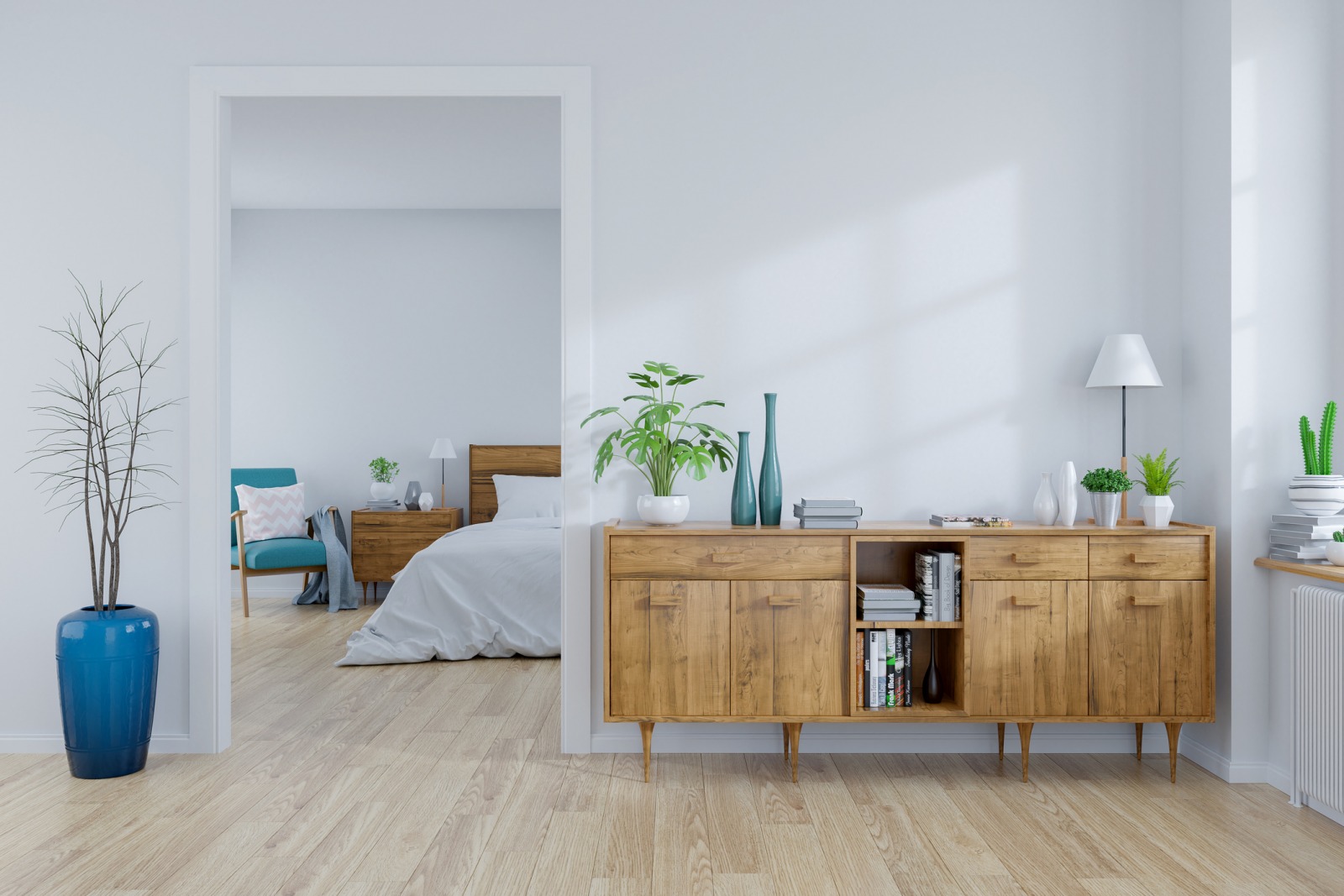Everything to Know About Putting Up Temporary Walls in a NYC Apartment

A temporary wall can carve a separate bedroom out of what used to be a single space. (EyeEm/Getty Images)
In a city as crowded as New York, privacy is a luxury. During this pandemic, more than ever, having room to ourselves — ideally a real room, with walls and a door — is becoming a must. Lucky for us, unlike in many other cities, installing a temporary wall here isn’t unheard of. In fact, temporary walls for apartments are fairly commonplace in NYC, especially in a share situation when there are multiple roommates involved.
“Temporary walls are an efficient, relatively inexpensive solution for creating another room, whether it be for a home office or an additional bedroom,” says Parisa Afkhami, a broker at Warburg Realty. “It takes a few short hours and you won’t need to repair the walls when you vacate the apartment. They’re held in place by tension rods that are invisible to the eye.”
Temporary walls are also incredibly versatile, depending on what kind of space you need and the layout of your apartment. “Many of my customers have used them in an L-shaped living room to wall off an area for a child,” says Dorothy Schrager, another Warburg broker. “Many come with doors for added privacy.”
Brooklyn Rentals Under $2,800 on StreetEasy Article continues below
How Do Temporary Walls for Apartments Work?
A temporary wall is exactly what it sounds like. It’s a wall that’s installed to divide a room and create private space. But unlike permanent solutions, temporary walls for apartments don’t require any nails or holes drilled into the floor or the ceiling. It’s all done by pressure. Metal tracks are laid along the floor and ceiling, studs are affixed to the tracks, then pre-painted sheetrock goes up. Voilà: an instant wall that can be easily removed whenever you move out, with no damage to the original apartment structure.
“We see a lot of creativity these days,” says Donny Zanger, a project manager at All Week Walls, a temporary-wall company in New York City. “For example, we just built a wall in a studio so the wife can work while her artist husband can do his thing. There’s a huge demand right now for temporary walls in all sorts of spaces.”
Manhattan Rentals Under $3,000 on StreetEasy Article continues below
Selecting the Right Type of Temporary Wall
Not every temporary wall is the same. There are three main kinds to choose from that can range in price from $850 to $2,000 (including installation), depending what will work best in your space.
Pressurized Walls
These are the only temporary walls for apartments that go all the way up to the ceiling. That gives them more of a “real wall” look and also creates the most privacy. Each wall is installed without any nails or screws, which assures that at the end of a lease it can be easily dismantled without leaving so much as a scratch. Even so, be sure to check with your landlord first before installing one, because these are prohibited in many buildings. (There’s a very good reason — see below to find out why.)
Partial Walls
Partial walls have become a go-to for renters looking for temporary solutions, since many landlords don’t allow a floor-to-ceiling pressurized wall. Like pressurized walls, partials are installed without screws or nails. They generally stop at about 12 inches from the ceiling — a 12-inch clearance is often required by landlords — and have a doorway opening but not an actual door. The no-door feature isn’t exactly a crowd-pleaser, but a curtain can easily be used instead.
Bookshelf Walls
Bookcase walls aren’t technically walls at all, but rather freestanding modular bookshelves. These units tend to be either six or 12 inches deep. They add storage space and, once loaded with books, also add sound insulation. Most won’t go all the way up to ceiling, but they are a creative and useful way to add privacy to a space. And you can change up their look whenever you like simply by changing the contents of the shelves.
Queens Rentals Under $2,700 on StreetEasy Article continues below
Always Keep Your Landlord in the Loop
Whether you are able to put up a temporary wall or not depends entirely on the building and your landlord. “As simple a solution as temporary walls for apartments may seem, landlords must grant permission,” says Warburg broker Gerard Splendore. “And the Department of Buildings must approve the wall, too, if the tenant is to act with complete transparency.”
That’s because, if another room is added via a temporary wall, the building’s Certificate of Occupancy will have to change. This is especially important for fire safety. Two firefighters were killed in 2005 when they were trapped in a burning building that did not have the correct floor plan on file, Splendore says.
“Legislation about temporary walls was passed requiring documentation and permission to install,” he says. “Whether you’re building a permanent wall or installing a temporary one, the paperwork is almost identical.”
In the end, the best advice is to be transparent about your wall-building intentions. “It’s wise to proceed with caution if you’re planning to install a temporary wall,” Splendore says. “Clear it with your landlord first.”
—
Whether you’re looking to rent or to buy, find your next NYC apartment on StreetEasy.